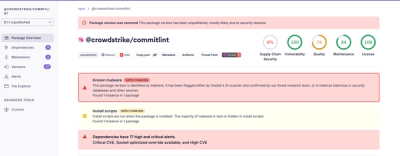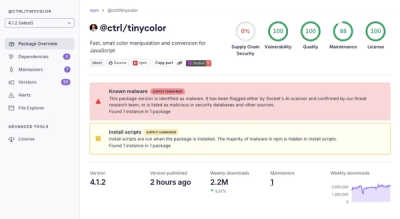geog
A pure numpy implementation for geodesic functions. The interfaces are
vectorized according to numpy broadcasting rules compatible with a variety of
inputs including lists, numpy arrays, and
Shapely geometries - allowing for 1-to-1,
N-to-1, or the element-wise N-to-N calculations in a single call.
geog uses a spherical Earth model (subject to change) with radius 6371.0 km.
geog draws inspiration from TurfJS
Operations
distance - Compute the distance in meters between any number of longitude,latitude pointscourse - Compute the forward azimuth between pointspropagate - Starting from some points and pointing azimuths, move some
distance and compute the final points.
Getting Started
Compute the distance in meters between two locations on the surface of the
Earth.
>>> import geog
>>> boston = [-71.0589, 42.3601]
>>> la = [-118.2500, 34.0500]
>>> geog.distance(boston, la)
4179393.4717019284
>>> geog.course(boston, la)
176.76437002826202
geog allows different sizes of inputs conforming to numpy broadcasting
rules
Compute the distances from several points to one point.
>>> dc = [-77.0164, 38.9047]
>>> paris = [2.3508, 48.8567]
>>> geog.distance([boston, la, dc], paris)
array([ 5531131.56144631, 9085960.07227854, 6163490.48394848])
Compute the element-wise distance of several points to several points
>>> sydney = [151.2094, -33.865]
>>> barcelona = [2.1833, 41.3833]
>>> geog.distance([boston, la, dc], [paris, sydney, barcelona])
array([ 5531131.56144631, 12072666.9425518 , 6489222.58111716])
geog functions can take numpy arrays as inputs
>>> import numpy as np
>>> points = np.array([boston, la, dc])
>>> points
array([[ -71.0589, 42.3601],
[-118.25 , 34.05 ],
[ -77.0164, 38.9047]])
>>> geog.distance(points, sydney)
array([ 16239763.03982447, 12072666.9425518 , 15711932.63508411])
geog functions can also take Shapely geometries as inputs
>>> import shapely.geometry
>>> p = shapely.geometry.Point([-90.0667, 29.9500])
>>> geog.distance(points, p)
array([ 2185738.94680724, 2687705.07260978, 1554066.84579387])
Other Uses
Use propagate to buffer a single point by passing in multiple angles.
>>> n_points = 6
>>> d = 100 # meters
>>> angles = np.linspace(0, 360, n_points)
>>> polygon = geog.propagate(p, angles, d)
Compute the length of a line over the surface.
>>> np.sum(geog.distance(line[:-1,:], line[1:,:]))
Quick Documentation
distance(p0, p1, deg=True)
course(p0, p1, deg=True, bearing=False)
propagate(p0, angle, d, deg=True, bearing=False)
For all of the above, p0 or p1 can be:
- single list, tuple, or Shapely Point of [lon, lat] coordinates
- list of [lon, lat] coordinates or Shapely Points
- N x 2 numpy array of (lon, lat) coordinates
If argument deg is False, then all angle arguments, coordinates and
azimuths, will be used as radians. If deg is False in course(), then it's
output will also be radians.
Consult the documentation on each function for more detailed descriptions of
the arguments.
Conventions
- All points, or point-like objects assume a longitude, latitude ordering.
- Arrays of points have shape
N x 2.
- Azimuth/course is measured with 0 degrees as due East, increasing
counter-clockwise so that 90 degrees is due North. The functions that
operate on azimuth accept a
bearing=True argument to use the more
traditional definition where 0 degrees is due North increasing clockwise such
that that 90 degrees is due East.
Installation
geog is hosted on PyPI.
pip install geog
See also



